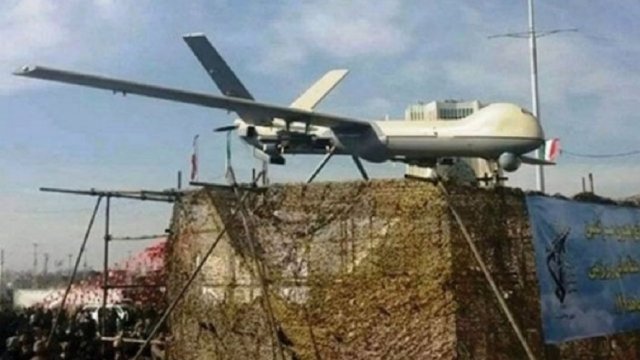Iran has developed an ‘improved’ variant of its Shahed-129 unmanned aerial vehicle, which was displayed by the Islamic Revolution Guards Corps (IRGC) for the first time during a rally in mid-February to mark the anniversary of the Islamic revolution in 1979.
According to Janes, the new version of the Shahed-129 showed a redesigned nose section that features a fairing/housing that is similar in appearance to the US-designed General Atomics RQ-1 Predator-series platforms, where previously no such fairing had existed.
While no details have been released pertaining to why the nose section has been redesigned, in the Predator-series UAVs this fairing is used to house a Ku-band beyond-line-of-sight (BLOS) satellite communications (SATCOM) datalink dish to increase the aircraft’s range and allow for it to be controlled from anywhere in the world. The MQ-1C Gray Eagle (itself derived from the Predator) also has a synthetic aperture radar/ground moving target indicator (SAR/GMTI) sensor in its nose fairing, which can be used to develop pattern-of-life intelligence.
Apart from the new fairing, the Shahed-129’s remaining design features appear to be as they were before, including the pusher-propeller, V-tail configuration, chin-mounted electro-optic/infrared (EO/IR) sensor turret, and two twin underwing hardpoints for air-to-surface munitions.
Iran has been reluctant to divulge too much in terms of the Shahed-129’s performance specifications, but state media has said that it has an endurance of 24 hours and a range of 2,000 km (though the current datalink is limited to 200 km). Without knowing precisely what the new nose fairing is for, it is hard to say if the ‘new’ Shahed-129 will be able to improve on these figures, or what additional capabilities it might be able to employ.
Source: IHS Jane’s 360

